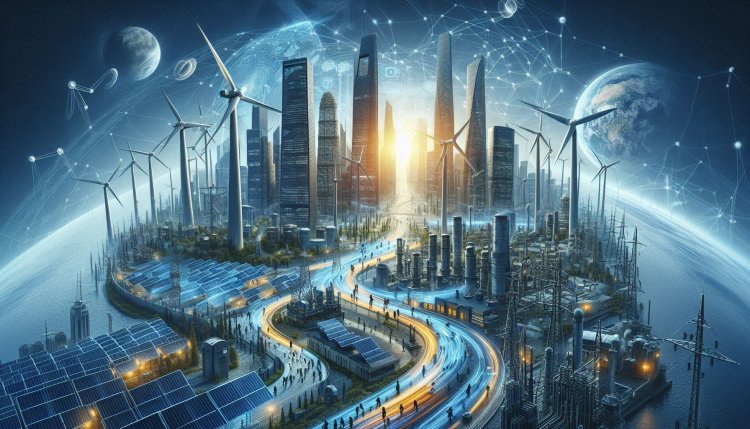Advances in Renewable Energy Grid Integration
Discover the latest research and advancements in integrating renewable energy sources into the grid. Stay informed with cutting-edge solutions.

Advances in Renewable Energy Grid Integration
Rapid advancements in renewable energy technologies have paved the way for a significant increase in the integration of renewable energy sources into the electricity grid. This integration is crucial for achieving sustainability and reducing greenhouse gas emissions. In recent years, there have been several key developments in the field of renewable energy grid integration that are shaping the future of the energy sector.
1. Smart Grid Technologies
One of the most significant advances in renewable energy grid integration is the development of smart grid technologies. Smart grids utilize digital communication and control technology to optimize the generation, distribution, and consumption of electricity. These technologies enable better coordination between renewable energy sources, energy storage systems, and traditional power plants, leading to a more reliable and efficient grid.
2. Energy Storage Systems
Energy storage systems play a crucial role in the integration of renewable energy into the grid. Advances in battery technology, such as lithium-ion batteries, have made energy storage more cost-effective and efficient. These systems can store excess energy generated by renewable sources during periods of low demand and release it when demand is high, helping to stabilize the grid and ensure a reliable power supply.
3. Demand Response Programs
Demand response programs are another key development in renewable energy grid integration. These programs incentivize consumers to adjust their electricity consumption based on the availability of renewable energy. By shifting energy use to times when renewable generation is high, consumers can help balance the grid and reduce the need for fossil fuel-based power plants during peak demand periods.
4. Virtual Power Plants
Virtual power plants are emerging as a promising solution for integrating renewable energy into the grid. These systems combine distributed energy resources, such as solar panels, wind turbines, and energy storage systems, into a unified network that can be controlled and operated as a single entity. Virtual power plants help optimize the use of renewable energy and enhance grid stability and resilience.
5. Grid-Forming Inverters
Grid-forming inverters are a new technology that is revolutionizing the integration of renewable energy into the grid. Unlike traditional grid-tied inverters, which require a stable grid connection to operate, grid-forming inverters can establish and maintain grid stability even in the absence of a stable grid. This technology is essential for enabling high levels of renewable energy penetration while ensuring grid reliability.
6. Advanced Forecasting and Monitoring Tools
Advanced forecasting and monitoring tools are essential for optimizing the integration of renewable energy into the grid. These tools use data analytics, machine learning, and artificial intelligence to predict renewable energy generation and consumption patterns with high accuracy. By providing real-time insights into grid operations, these tools help grid operators make informed decisions and ensure grid stability.
7. Interconnection and Transmission Infrastructure
Investments in interconnection and transmission infrastructure are critical for integrating renewable energy into the grid. Upgrading and expanding the grid infrastructure allow for the reliable and efficient transport of electricity from renewable energy sources to consumers. By connecting remote renewable energy resources to population centers, these investments help unlock the full potential of renewable energy generation.
8. Policy and Regulatory Frameworks
Policy and regulatory frameworks play a crucial role in facilitating the integration of renewable energy into the grid. Governments around the world are implementing measures such as renewable energy targets, feed-in tariffs, and carbon pricing to incentivize the adoption of renewable energy technologies. Clear and consistent regulations help create a favorable environment for investments in renewable energy and promote grid integration.
9. Collaborative Research and Development
Collaborative research and development efforts are driving innovation in renewable energy grid integration. Public-private partnerships, academic-industry collaborations, and international initiatives bring together diverse expertise and resources to address the technical and operational challenges of integrating renewable energy into the grid. These collaborations accelerate the deployment of advanced technologies and solutions for a sustainable energy future.
10. Resilient Grid Design
Designing resilient grids is essential for ensuring the reliable integration of renewable energy sources. Resilient grid design involves incorporating redundancy, flexibility, and adaptive capabilities into the grid infrastructure to withstand disruptions and maintain power supply during extreme events. By enhancing grid resilience, renewable energy integration can contribute to a more secure and sustainable energy system.
What's Your Reaction?

















